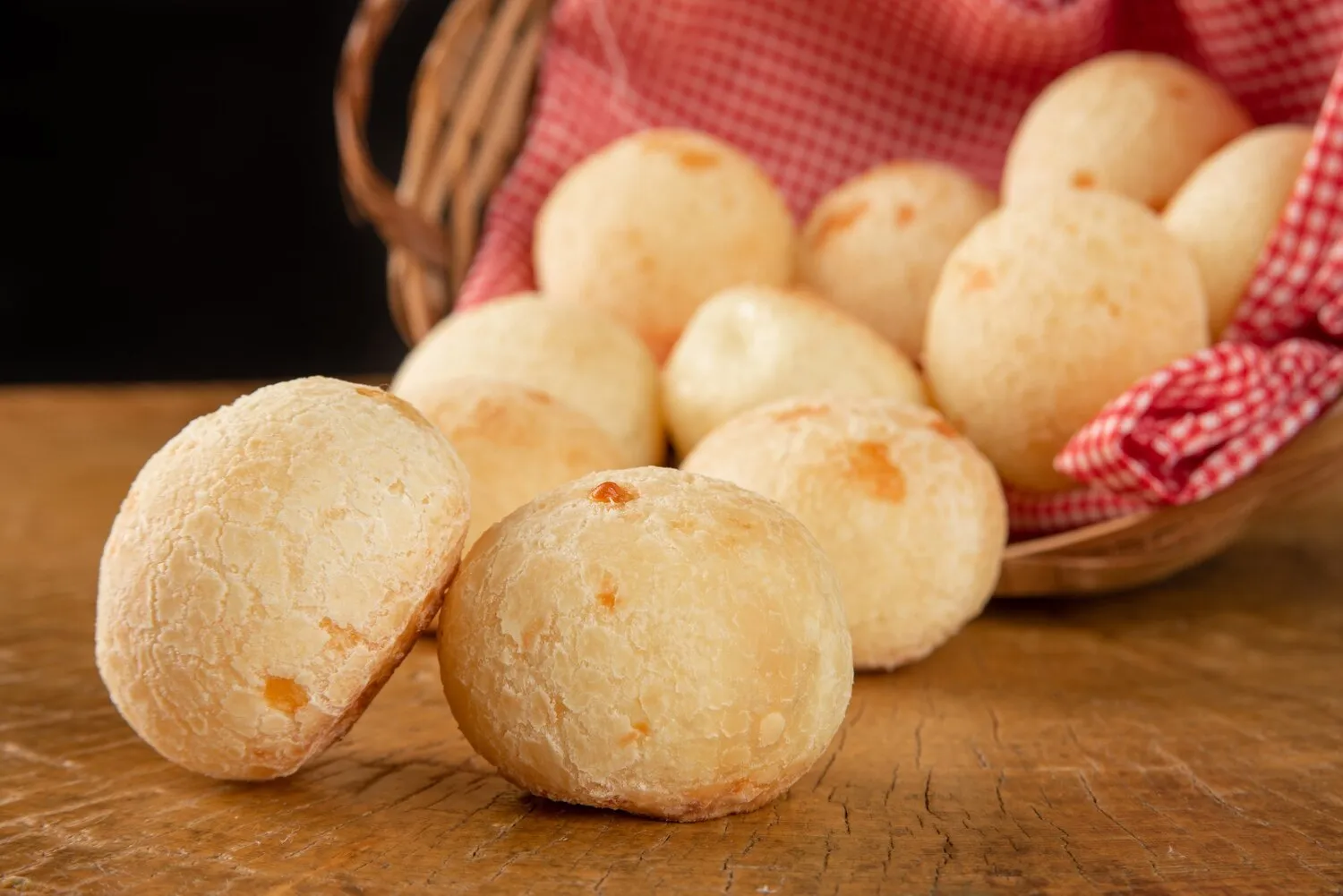
Pão de Queijo
Cheese bread.
Nutrition Facts
* The % Daily Value (DV) tells you how much a nutrient in a serving of food contributes to a daily diet. 2,000 calories a day is used for general nutrition advice.
The exact origins of Pão de Queijo are somewhat debated, but it's widely believed to have emerged in the state of Minas Gerais, Brazil, during the 18th century. This period saw a rise in dairy farming and cheese production in the region. The use of cassava starch (tapioca flour), readily available in Brazil, likely contributed to its development, offering an alternative to wheat flour which was often scarce and expensive.
Pão de Queijo is deeply embedded in Brazilian culture, particularly in Minas Gerais, where it's a staple food enjoyed at any time of day.
Breakfast Staple
It's a very common breakfast item in Brazil, often paired with coffee.
Social Gathering Food
Pão de Queijo is frequently served at social gatherings and parties, providing a comforting and familiar snack.
Minas Gerais Pride
It is considered a culinary symbol of Minas Gerais, representing the region's rich dairy heritage.
National Favorite
While originating in Minas Gerais, pão de queijo's popularity has spread throughout Brazil and it is considered a national favorite.
Pão de Queijo boasts a savory and slightly tangy flavor profile, with a unique chewy texture.
The primary flavors come from the cheese, which varies depending on the type used, but often includes queijo minas, a semi-cured Brazilian cheese. The tapioca flour provides a characteristic chewy texture and a mild, slightly sour taste. The addition of milk, eggs, and oil further enriches the flavor and contributes to the bread's soft interior and slightly crisp exterior. Some variations include parmesan or other hard cheeses for a stronger, saltier taste.
Tapioca Starch Choice
Use both sweet and sour tapioca starch for the most authentic flavor and texture. The sour starch contributes to the chewiness and a slight tang.
Cheese Quality
The quality of the cheese significantly impacts the final flavor. Authentic 'queijo minas' is ideal, but other semi-hard cheeses like mozzarella or Monterey Jack can be substituted, though the flavor will be different.
Temperature Matters
Scalding the tapioca starch with hot milk or water helps to gelatinize it, resulting in a chewier texture. Allow the mixture to cool slightly before adding the eggs.
Baking Time and Temperature
Baking at a high temperature initially helps to create a crispy exterior, while reducing the temperature allows the interior to cook through without burning. Keep an eye on them – oven times may vary.
Freezing for Later
Pão de Queijo dough can be frozen before baking. Just thaw completely and bake as directed for a convenient snack anytime.
Explore additional Handy food dishes and restaurants
Explore Handy foodDiscover top dining spots and culinary experiences in Uberaba.
Explore UberabaLearn more about the food culture, restaurant scene, and culinary heritage of Brazil.
Explore Brazil